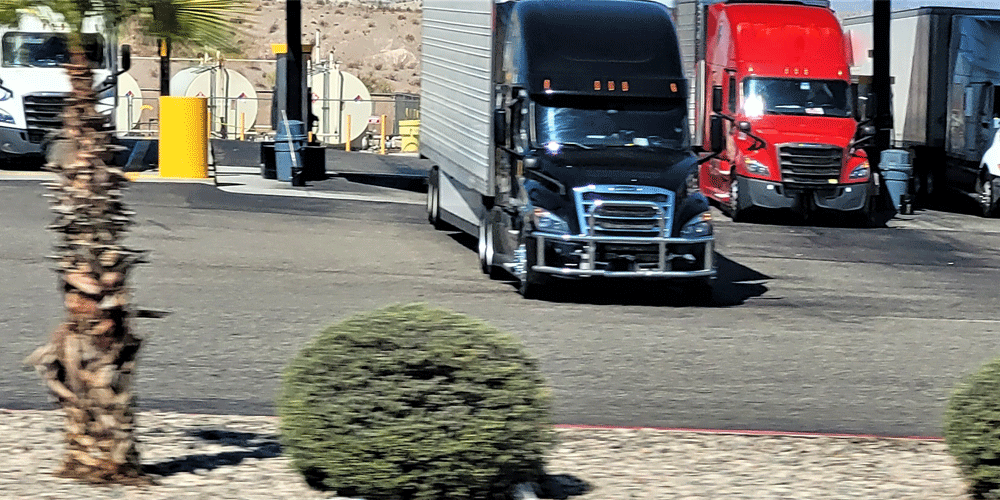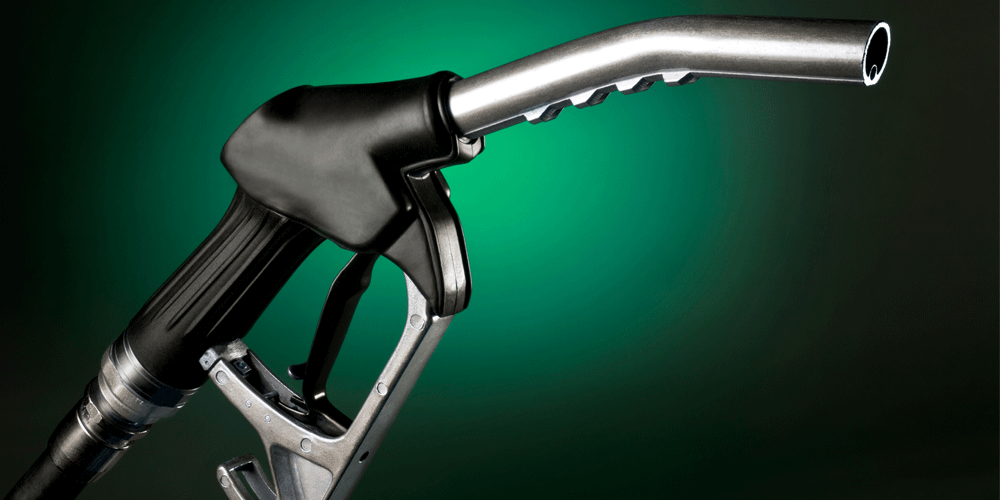How to Run a Successful Trucking Business [10 Tips]
Blake Hagberg and Samantha Dwyer
Blake has spent over ten years in the trucking industry. As an operations manager in the vans division, he works almost exclusively with independent contractors. Prior to joining the ATS team, his time was split between less than truckload freight, over-the-road trucking and dock operations. Samantha joined the Anderson Trucking Family in November of 2012 as a specialized driver manager and managed a fleet of mixed company and contractor drivers. In the spring of 2014, she transitioned to the driver administration department and began working in contractor services. While in contractor services, Samantha familiarized herself with all processes, procedures and information in regards to driver contracts, pay and settlements. She is currently the operations support manager and oversees both the contractor services department as well as the driver settlement department and leads both of her teams to ensure our drivers receive the highest level of service required to help navigate their accounts and settlements on a daily basis.
Be extremely choosy with your load selection. Take a lot of downtime and a 34-hour reset every weekend. Take a lot of unplanned home time. Don’t save any money. Run freight that your truck isn’t designed to haul. Ignore your cost-per-mile.
The above example is how you don’t run a successful business as a truck driver.
First and foremost, you’re a truck driver. But if you want to be successful, you also have to have a business owner mindset.
Running a business requires discipline. Extreme discipline. It can truly feel like a tightrope. One misstep can result in your demise.
One of the best ways you can succeed as an independent contractor or an owner-operator is to run yourself like a business (because you are a business). It’s tough to succeed if you don’t have a strong pulse on your monthly expenses, your monthly earnings and all the administrative work you need to keep your business going.
There’s a lot more to it than just moving loads. You have to be your own administrative person, your own secretary and your own payroll person. You’ll wear many hats, but this is how you set yourself up for success.
We’re going to help you learn how to run a business from a financial side and from a freight side, so you’re getting insider information from an operations manager and the operations support manager here at Anderson Trucking Service (ATS). We help drivers like you find success on the road every day.
When you’re finished reading this article, you’ll understand:
- How to calculate your cost-per-mile so you can run successfully in any market
- How to save money for your business and for your personal expenses
- How to keep moving loads
- How to utilize your Hours of Service (HOS)
- And much, much more
Most importantly, we’ll help you understand if running a truck driving business is the best move for you, or if you should pursue other truck driving opportunities.
10 Tips for Success
First and foremost, you need to understand what freedom really means as a truck driver. Yes, you get to select your own loads. You get to choose the freight you want to haul, avoid the freight you don’t want to haul and go to whichever part of the country you’d like to see.
But.
That freedom requires a lot of responsibility. More than you may have ever had in your life.
If you’re not smart about the freedom you’ve been given, things can go very, very wrong. We’ve seen drivers take that freedom and run with it and become incredibly successful, fruitful business owners. We’ve also seen it go the other way, which is really hard to witness. We want you to succeed and it’s such a shame to see it not happen for you.
With a lot of discipline, you can find the success you crave and the success we want to see you experience.
Review these 10 tips to help get yourself there.
Tip #1: Get Your Finances in Order
Your first step, before you decide to pursue the independent contractor path, is to determine if you can afford to operate as one.
If you don’t have savings built up to the point where you can afford to not make money for three to six months, you probably shouldn’t pursue an owner-operator position.
Is that bold to say? Yes. But is it true? Certainly.
You’ll have an insane amount of money coming in every month, but it’s also expensive to keep your business afloat. You have truck payments to think about and maintenance expenses; business expenses and insurance and benefits; and a tax professional or certified public accountant (CPA) to keep your daily business in order.
If you aren’t creating a budget for all these things, it’ll be fairly easy to go in the hole.
You also have to think about timing. You might not want to become a first-time owner-operator when the market is especially volatile. Try to enter the market when it’s stable. If you enter the market when it’s hot, you might not know how to run successfully when the market drops.
Conversely, when you become an owner-operator during a down market, you can struggle to get your feet off the ground.
Tip #2: Set Up the Right Business Structure
Before you can even think about hauling loads, you have to take care of the administrative work first. One of those tasks includes setting up a business structure. If you’re running under your own authority, you’ll have to do this anyway.
This article will help you decide which business structure and tax designation make the most sense for your business.
Tip #3: Get Your Insurance and Benefits in Order
If you really want to succeed, you need to make sure you and your vehicle are properly insured. This includes making sure you’re getting regular truck estimates so you can insure your truck for the correct value. We’ve seen drivers spend more than they need to on monthly insurance costs because they didn’t have their truck regularly valued.
You must keep up on any paperwork associated with the upkeep of your authority, truck and trailer insurance and other permits and licenses.
Tip #4: Buy the Right Equipment
Having the right equipment is crucial. If you aren’t operating a fuel-efficient truck or you’re hauling loads that your truck isn’t designed to haul, your wallet can really take a hit. We’ve seen drivers go out of business because their truck wasn’t fuel efficient and they ended up fuel poor.
We’ve seen drivers with trucks built to haul flatbed trailers hauling dry vans and losing insane amounts of money on fuel.
Haul the freight that your truck was designed to haul and you’ll end up a lot more successful. There’s a reason a truck is designed a certain way with specific dimensions and hauling capacity. Make sure it matches the freight you’re hauling.

Tip #5: Calculate Your Operating Costs
Unfortunately, a lot of drivers don’t understand their operating costs. You should know, week by week, how your operating costs are changing based on several variables like the current market and the cost of fuel.
Before you can figure out your budget and how to effectively choose your loads, you need to figure out your operating costs and how much it costs to run per mile (CPM). Once you figure that out, that’ll guide your choices every day out on the road.
To calculate your CPM, divide your total expenses for each month (fixed and varied) by the total number of miles you travel each month.
Your fixed expenses don’t change; they’re the same every month. They include:
- Truck payment (if you still owe on your truck)
- Tractor and trailer insurance
- Accounting services (optional)
- Federal Highway Use Tax
- Rental payments for a transponder or in-cab computer system
Variable expenses change from month to month depending on how many miles you drive, the routes you drive, the cost of fuel and more. They include:
- Maintenance account (money you set aside for maintenance costs, if applicable)
- Fuel
- Tolls
- Pay (optional)
You may add expenses to either of these lists based on your business expenses.
Then you need to take into account your miles driven. You can either use the odometer miles or the settled miles your customer recognizes as miles driven.
Once you divide your total expenses by the number of miles you travel each month, you can choose loads that’ll make you profitable. For instance, if your CPM is $1.20, choose loads that average $1.20 or higher.
You should regularly calculate your CPM, especially as the market fluctuates.
Some carriers pay a fixed amount to owner-operators, so make sure when choosing a carrier that you choose one that has a fixed CPM that’s higher than your operating cost.
Tip #6: Budget
Budgeting is the key to success for any business owner. When you determine your operating costs, you’ll get a great idea of your business expenses and how you need to budget, but you also have your personal expenses to think about.
Your business finances and your personal finances should be totally separate. They shouldn’t share an account. You should never take money out of your business account for personal expenses. $50 here and there leads to $500 and $1,000 withdrawals for motorcycles, a new boat and a lavish vacation.
It’s a good idea to save 50 percent of your earnings. You can plan on about 30 percent of that going to taxes. Because you don’t pay taxes on the money you earn, you can expect to pay in huge amounts every year. The remaining 20 percent of your earnings can be your safety net.
What you put into your business account should be used solely for things like fixing your truck, insurance costs, taxes, money to cover truck payments if you do decide to take a vacation, emergency situations and the like.
That’s why you should keep these accounts separate. It’s all too easy to see a large lump sum in your business account and think, Hey, I can totally afford that three-week beach vacation or a new boat! And then your truck breaks down and all that money is gone.
Does that mean you can never spend your money again and enjoy all the hard work you put in every day? Certainly not.
Your budget should be set up to allow you to put money back into the business and a set amount should go into your personal savings or checking account. It’s a balancing act.
It’s a great idea to have auto deductions from your settlements. When you don’t see the money and it automatically goes into your account, it’s a lot easier to avoid spending it.
Tip #7: Choose Loads Effectively
Choosing loads to keep earning a profit requires a lot of planning on your part.
Whether you’re running under your own authority or you’re running with a company, you need to understand these factors to choose your loads to make you profitable:
- Your CPM
- Current market rates
- Headhaul and backhaul markets
Don’t be too picky; you’ll eliminate a lot of great-paying freight this way.
Check out these tips to move more loads.
Tip #8: Use your Hours Of Service (HOS) Wisely
This tip comes back to discipline and planning again.
When you’re a company driver, you have a dispatcher encouraging you to keep running. When you’re an owner-operator, you’re the one who’s in control. You have to motivate yourself.
You go from being told what to do to having the freedom to go to bed and wake up whenever you want to. Sometimes that freedom is detrimental to drivers because instead of taking a 10- or 11-hour break like a company driver or independent contractor would, they’ll take a 12- or 14-hour break. They might wake up at noon when every other truck is already running. All the freight is often assigned by 8:30 a.m. and there isn’t much left for the driver that slept until noon.
If you’re consistently sleeping late, you’re missing out on a lot of great freight. If you arrive late to drop off your freight, you might have to wait a day to get unloaded. We’ve seen customers make drivers wait a week to get unloaded. Then you miss out on another load or two and the money you needed.
Especially when you’re in a down market, you have to be mindful of your HOS and use them wisely.
Wake up promptly. Use your hours effectively so you can move more freight. Practice professionalism by arriving to pick up and drop offs early.
Tip #9: Fuel For Your Load
You need to be smart about how you fuel your truck. In general, a fuel tank in a semi-truck can hold about 200 or 250 gallons of fuel. If fuel is around $5 per gallon, and you always keep your tank full, you might have $1,000 of fuel in your tank at all times. That’s $1,000 tied up in fuel — money that could be used elsewhere.
Instead, fuel for the load. Determine approximately how much fuel you’ll use for the load. Then, put in a few gallons to ensure you have enough in the tank to deliver the load and nothing more. Don’t spend all your money on fuel.
Also factor in how fuel prices change by state. Knowing where to fuel is just as important as knowing how much to fuel.
Two drivers could take the same load on the same route and the driver that nickels and dimes themselves and only gets the fuel they need will end up making more revenue than the driver who fills up their tank and keeps their profits in the tank.
Think of it this way: Should your profit be in your wallet or should it be in your fuel tank?
Don’t top off your tank every given opportunity; you’ll overspend on fuel. Fuel for what you need for the load.
Tip #10: Plan Your Home Time
As great as it is to go home whenever you want, and you certainly can when you’re an owner-operator, you just won’t be as successful as you could be if you’re going home every weekend.
If you want to succeed in a down market, you can’t go home as often if you want to continue to bring in the same amount of money you can when the market is hot. You have to cut back on the frequency and amount of home time if you want to keep your profit margins up.
Before you take home time, make sure you budget for it. That means you should have enough money saved to cover your fixed expenses while you’re at home and not making money. If you don’t have the money to cover your expenses, it can be a snowball effect when you get back on the road. When you’re behind on your expenses, it can be tough to get back on track.
Decide Which Owner-Operator Path is Right for You
Now all that’s left to do is apply these practices to your business practices.
The key word to think about here is discipline. If you aren’t disciplined, you’re more likely than not going to struggle on the road running independently.
Here at ATS, we have an option for owner-operators who want to sign on with a company to haul their freight.
![How to Run a Successful Trucking Business [10 Tips]](https://blog.drive4ats.com/hubfs/Images/Blog/Operating%20a%20Successful%20Business/OOATSTruckFeatured.png)


